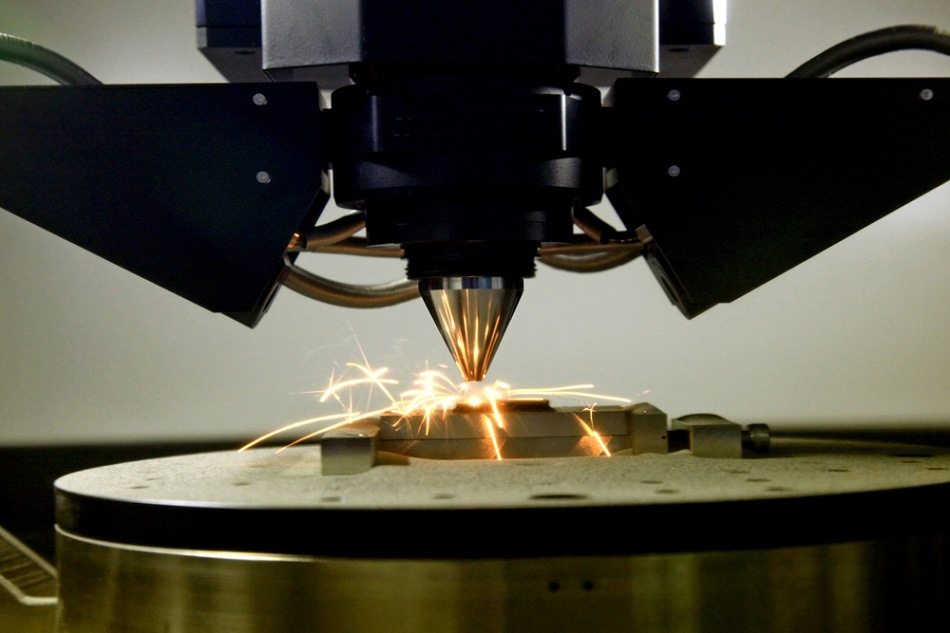 sspopov/ Shutterstock.com
sspopov/ Shutterstock.com
MIT engineers have created a new desktop 3-D printer that can fabricate as much as 10 times faster than commercially-available 3-D printers, according to a new report in the journal Additive Manufacturing.
The biggest breakthrough that led to the new printer is a compact printhead that features two speed-enhancing parts: a screw component that passes polymer material through a nozzle at a high pressure; and a laser that quickly heats up and melts the material, permitting it to flow rapidly through the nozzle.
Study Author Anastasios John Hart, associate professor of mechanical engineering at MIT, said his team’s new printer could unlock much greater potential for 3-D printing.
If I can get a prototype part, maybe a bracket or a gear, in five to 10 minutes rather than an hour, or a bigger part over my lunch break rather than the next day, I can engineer, build, and test faster.
Anastasios John Hart, Study Author
In a previous study, the same MIT researchers found three primary factors that limit a conventional printer's speed: how fast a printhead can move, how much pressure a printhead can use to push material through a nozzle and how rapidly a printhead can melt a material in order to make it flow.
The MIT team addressed all three of these limitations in developing their new system.
In most commercial 3-D printers, two small wheels inside the printhead spin and push plastic or filament material through the nozzle. The MIT team made a decision to do away with this "pinchwheel" design, swapping it for a screw system that rotates inside the printhead. When researchers fed a textured plastic filament onto a turning screw, it gripped the textured surface and passed the filament through the nozzle at greater forces and speeds.
Next, the team placed a laser downstream from the screw to quickly melt the filament before it passed through the nozzle. By doing this, plastic was melted more rapidly and thoroughly than with commercial 3-D printers, which use conduction heat.
The study team said adjusting the laser’s power and turning it rapidly on and off allowed them to control the heat level delivered to the plastic. Both the laser and the screw system were integrated into a custom-built, fist-sized printhead.
Finally, the team developed a high-speed gantry system to hold the printhead and move quickly between various positions and planes. With this system, the entire printhead was capable of moving quickly enough to keep up with the speed of extruding material.
All three factors enable the printer to be up to 10 times faster than the commercial printers that we benchmarked.
Anastasios John Hart
Using the new system, the researchers printed multiple intricate parts, with each one taking 5 to 10 minutes to produce, as opposed to with an hour for standard printers. However, the team did encounter a small glitch in their design: The extruded plastic is passed through the nozzle at such high pressure and temperature that a printed layer may still be somewhat molten when the printer is putting down a second layer on top of it.
“We have to cool the part actively as it prints,” Hart explained, “to retain the shape of the part so it doesn’t get distorted or soften.”
The MIT researchers said they are currently addressing that glitch, as well as investigating ways to optimize the printhead. The team said they will also look for new materials that could be used with their new printer.
We’re interested in applying this technique to more advanced materials, like high strength polymers, composite materials. We are also working on larger-scale 3-D printing, not just printing desktop-scale objects but bigger structures for tooling, or even furniture.
Anastasios John Hart
Disclaimer: The views expressed here are those of the author expressed in their private capacity and do not necessarily represent the views of AZoM.com Limited T/A AZoNetwork the owner and operator of this website. This disclaimer forms part of the Terms and conditions of use of this website.